Of the great unsettled debates to plague humanity over the ages, the question of whether a perfect kettlebell swing form/technique exists would certainly be among them. Internet battles have raged and friendships have been lost all over the quest for the “perfect” swing. Sadly, far fewer swings have been swung than arguments held, but that is another story.
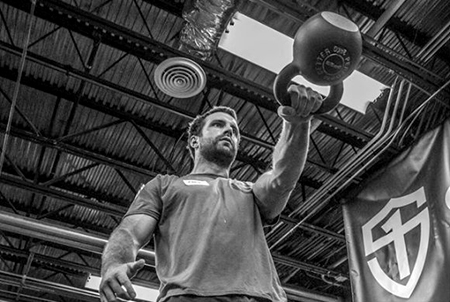
Is There a Perfect Kettlebell Swing?
I am here to say once and for all that, yes — a perfect swing form/technique does exist. Or more accurately: there is a perfect swing technique for you. I’ll let that sink in for a moment.
There is a perfect swing for you and your individual structure and history. We will break each of those down a bit as we move along, but once the basic blueprint of this exercise called a kettlebell swing is tailored to you, we can begin the quest to find that perfect swing.
Kettlebell Swing Basics
Our quest begins with a basic blueprint of the exercise. The swing in its simplest explanation is a dynamic hip hinge. A basic blueprint of the hip hinge is well described in the picture below. Shoulders above hips, hips above knees, with a well-maintained spine.
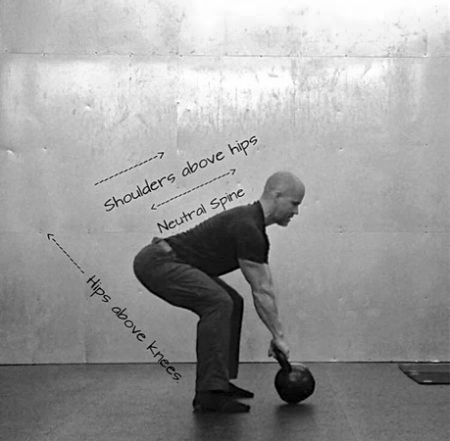
Your structure and movement ability may influence how this looks, but two particular extremes are counterproductive and should be avoided:
- When the shoulders are even with or lower than the hips, the hip hinge has become more of a stiff legged deadlift with too much emphasis on the hamstrings.
- When the hips drop below the knees, the hip hinge has become a squat and that isn’t the goal when performing a swing.
Vertical Shins
The vertical tibia requirement is an intention and not a reality for many people. The ability to keep the shins vertical (another way of saying vertical tibia) is highly dependent on structure, and an individual should not give up the stability of their spine in order to achieve the intended “vertical shin.”
Below is a picture of Pavel swinging from several years ago. Note the shin angle. People are usually skeptical when I ask them to bend their knees more during their kettlebell deadlift or swing, but that skepticism fades when they feel how much more powerful their swing becomes.
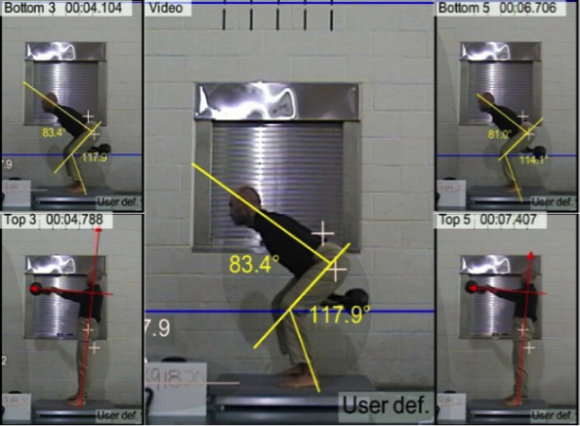
Stick to the basic blueprint of shoulders above hips and hips above knees with a well-maintained spine, and adjust the position to suit you.
Structural Variation
Structure is interesting, and we as a species have a tremendous amount of variation in ours. Tremendous amount of variation (repeated on purpose). So much so that it is estimated that upward of 40% of the population has a hip structure that falls outside of previously held “norms.”
We see it every day but sometimes fail to adjust the blueprint to it. Imagine getting in a friend’s car. You are 5’ 9” but your friend is 6’ 5”. Do you think you will need to adjust the seat and mirrors? I would think/hope so!
Short torso, long torso, short arms, long arms (is it just me or am I bordering on a Dr. Seuss story here), short legs, long legs, and any of these in every combination possible will impact how the blueprint is adjusted. Everything — to the degree of foot turnout — is adjusted to the individual. Structure matters.
Personal History
History includes injury history and exercise history and can impact exercise selection and execution. An individual that has never “lifted weights” before may have no concept of what a hip hinge is, whereas an experienced powerlifter will know the hip hinge immediately.
An individual with a history of a car accident and surgery on his or her lower back may be hesitant to learn the hip hinge whereas someone who has never been injured may jump right in without hesitation. Every history and individual brings something different to the kettlebell swing and this should be accounted for when teaching it.
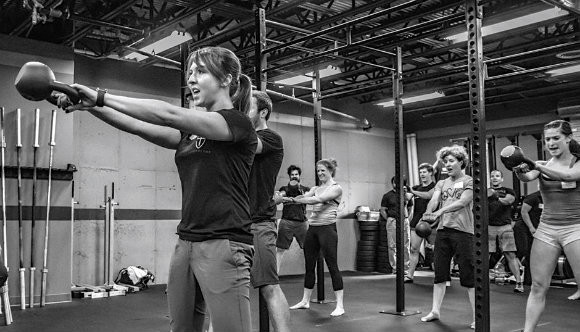
Now that we have a blueprint and know to adjust it to the individual, I have a couple of additional tips for you: lats and rhythm.
Tip #1: Lats
During SFG Courses and Certifications, we make a big deal about getting the arms connected to the ribs during the kettlebell deadlift and swing. This activates the lats (latissimus dorsi for the anatomy police) and connects the upper body to the hips via the thoracolumbar fascia and increases your stability and power.
Basically, try to bring your armpit “down” to your hip without getting shorter during the eccentric phase of either exercise but realize that once you finish the drive to hip extension, the arms will come off of the ribs (otherwise it looks like Frankenstein trying to swing a kettlebell). Which brings me nicely to the second tip, rhythm.
Tip #2: Rhythm
There is a rhythm to the swing. Stand tall with your arms extended straight out from your shoulders with your hips extended. Slowly let the arms come down until the inside of the upper arm makes contact with your ribs, and then begin the hip hinge to the loaded or eccentric position. (Note: the inner part of the forearms will be hitting very high in the groin and pointing behind you — not at the ground.)
Now, begin the hip extension, returning to fully-extended hips (glutes tight) and standing tall. Once the hips finish their extension, then the arms come off of the ribs (“blown off the ribs” by the wave of power from the hip extension) and ultimately extend straight from the shoulders.
The breathing is also in rhythm, with a sharp inhale at the bottom/loaded position and a sharp exhale at the top. Practice this as an “air swing” and look for that rhythm during your full-speed kettlebell swing.
The Perfect Swing Is Your Swing
Remember that a “perfect” kettlebell swing is smooth, athletic, and powerful — and tailored to the individual. And now that this question of the ages has been answered, you can find an SFG in your area and prepare for an SFG User Course or SFG Certification. Happy swinging!
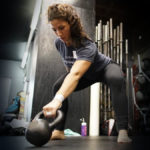
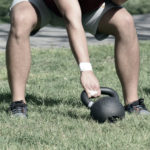
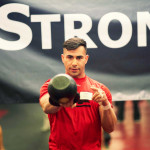
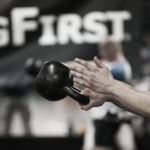




Great piece! Thank you Brett Jones!
Fantastic article, I learned a lot! Thank you so much, Brett.
Great article! That’s been my quest, find my perfect swing. Thanks, Chief! Thanks, Mike Wille for pointing me this reading!
thanks brett
Nikki, that 50 second video is gold. Thanks for posting it.
that cue to get the arms connected to the ribs is magic – i had been having a tough time with my 1H swings getting symmetrical at the top – i couldn’t get the working shoulder back in line with the non working shoulder, so my shoulder line was at an angle to my hips – i knew in the long term this would potentially create a problem – this cue to stick the arm to the ribs has effectively fixed that flaw in my technique – thanks Brett.
Great piece! Are there any errors in the following two statements? I found these tips from the S&S book when I read it again. It helped make my swing crisper.
1. KB coming down: Don’t let the gravity take over, but really it pull it hard and fast with your lats, and throw it back as far as possible. Hip has no role here. Hip ‘plays chicken’ goes out of the way as the hands comes close to it. Inhale as you come down and/or at the bottom.
2. KB going up: Really use heavy force and thrust your hip forward to reach a perfect veritical plank. Hands has no role here. This will let the hands and KB flying as soon as hips are straightened. Exhale with a hiss at the top. Entire body tight as one piece of wood at the top. Knee caps pulled up. Abs tight and tight. KB resting in the air for a moment.
Abdul, a video would be more useful. Please consider uploading one for feedback at the Discussion Forum: http://www.strongfirst.com/community/
I never tire of the Brett Jones voice! Smart, funny (even better with an in-person deadpan delivery) and just downright great information. Thanks for this post!
Thank you, Brett, for writing this article! As one of those people with some “structural variation,” I found this very helpful and informative (not to mention reassuring)! 🙂
Thanks again for a great article.
mmm
Pardon me, that was a test.
A great piece, Brett!
(haha!)
Great article. It got me thinking, so I decided to record myself doing some swings. Turns out my shoulders are coming down to about even with my hips. I have to wonder when that started to happen, but at least now I know what to work on.
Question:
What should happen with the shoulders at the top of the swing? Should one resist the force of the swing and pull the shoulders back (engaging the lats and pushing chest out) or should the shoulders be relaxed and allow the force of the swing to pull them forward?
AG, you do want to resist the bell pulling you (your arms, your shoulders) forward… but that does not mean you should push your chest out. Do not hyperextend, but simply remain planked and straight with glutes AND abs contracted AND your shoulders remaining actively connected to the body. This video is about the one-arm swing, specifically: https://www.youtube.com/watch?v=X58ZHV3og2s
I am pretty sure this is a typo, but “..the ability to keep the shins vertical (another way of saying vertical tibia) is highly dependent on structure, and an individual should give up the stability of their spine in order to achieve the intended “vertical shin”. Should it read “the individual SHOULDN’T give up the stability….” If I am incorrect, please explain.
GREAT article! thanks so much…can’t wait to share it!
Thank you, Beth! Corrected.